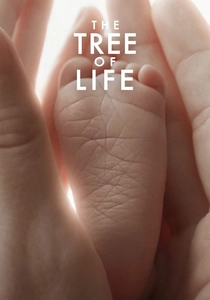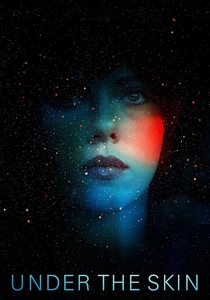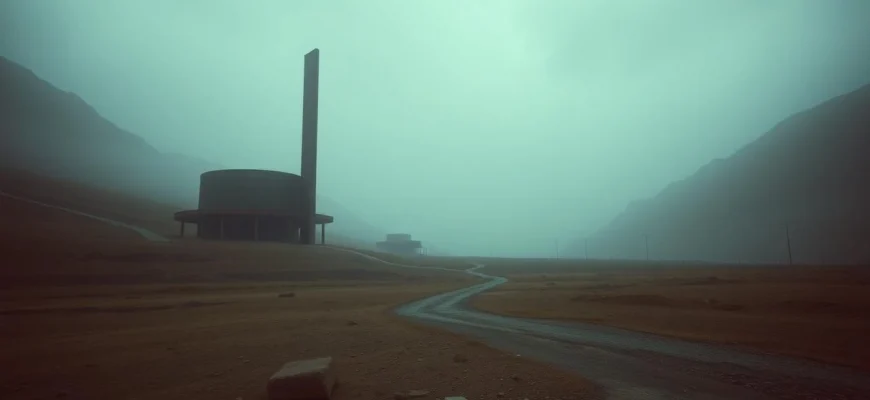If you were captivated by the hauntingly atmospheric and philosophical depth of 'Stalker' (1979), you're likely craving more films and shows that explore similar themes of existentialism, mystery, and surreal landscapes. This article will guide you through nine cinematic experiences that echo the enigmatic allure of Andrei Tarkovsky's masterpiece. Whether you're drawn to slow-burning narratives, profound philosophical questions, or visually stunning dystopias, these recommendations will satisfy your craving for thought-provoking storytelling.

The Seventh Seal (1957)
Description: Bergman's medieval masterpiece shares 'Stalker's' existential questioning and spiritual crisis. Both protagonists journey through symbolic landscapes confronting mortality. The chess game with Death mirrors 'Stalker's' Zone as a test of faith and meaning.
Fact: Bergman got the idea from painting a church mural as a student. The iconic chess scene was improvised during a lunch break. The film revived interest in medieval morality plays.
 Watch Now
Watch Now 
Ivan's Childhood (1962)
Description: Tarkovsky's debut feature already shows his signature poetic style seen in 'Stalker'. Both films blend harsh reality with dreamlike sequences, using water and nature imagery symbolically. The trauma of war in 'Ivan' parallels 'Stalker's' post-apocalyptic trauma.
Fact: Won the Golden Lion at Venice Film Festival. The famous birch forest scene was inspired by Leonardo da Vinci's drawings. Tarkovsky reshot much of the original director's work, establishing his control.
 Watch Now
Watch Now 
Persona (1966)
Description: Like 'Stalker', Bergman's psychological drama breaks narrative conventions to explore identity and human connection. Both use striking black-and-white cinematography and experimental techniques to create unsettling, philosophical atmospheres where reality becomes fluid.
Fact: The famous merged-face shot was achieved by melting film emulsion. Bergman wrote the script while hospitalized. At 83 minutes, it's one of cinema's densest psychological studies.
 Watch Now
Watch Now 
Solaris (1972)
Description: Directed by Andrei Tarkovsky, like 'Stalker', 'Solaris' is a philosophical sci-fi film that explores human consciousness, memory, and existential dilemmas. Both films feature slow, meditative pacing and stunning visual poetry, emphasizing atmosphere over plot. The themes of isolation and the search for meaning are central to both.
Fact: Based on Stanisław Lem's novel, Tarkovsky initially disliked the source material but created a masterpiece. The film's famous highway sequence was shot over months to achieve the perfect light. NASA astronauts reportedly watched 'Solaris' to prepare for space missions.
 Watch Now
Watch Now 
The Sacrifice (1986)
Description: Tarkovsky's final film shares 'Stalker's' spiritual yearning and apocalyptic undertones. Both feature a mysterious 'Zone' (literal in 'Stalker', metaphorical here) where reality bends. The long takes, natural soundscapes, and philosophical dialogue create a similarly hypnotic experience.
Fact: Tarkovsky made this while dying of cancer, infusing it with mortality themes. The climactic burning house scene was done in one take - the second take destroyed the set. The film won the Grand Prix at Cannes but was booed by some critics.
 Watch Now
Watch Now 
Wings of Desire (1987)
Description: Wenders' Berlin-set fantasy shares 'Stalker's' poetic meditation on human longing. Both use their settings (the Zone/Berlin) as characters, blending the mundane with the metaphysical. The angels' observations mirror the Stalker's witness to human fragility.
Fact: Peter Falk plays himself because Wenders couldn't afford another actor. The library scenes used real Berliners' thoughts. Nick Cave's first major film appearance.
 Watch Now
Watch Now 
Three Colors: Blue (1993)
Description: Kieślowski's film shares 'Stalker's' exploration of grief and emotional isolation through sensory cinema. Both use color symbolically (blue/sepia) and feature protagonists withdrawing from life before transformative journeys. The scores are integral to both films' emotional impact.
Fact: Juliette Binoche learned piano for the role. The drowning sugar cube scene took 40 takes. First film to use a 'blue filter' for psychological effect.
 Watch Now
Watch Now 
The Tree of Life (2011)
Description: Malick's cosmic family drama extends 'Stalker's' spiritual inquiry through breathtaking imagery. Both blend intimate human drama with grand metaphysical questions, using nature as divine language. The non-linear structures demand active viewer contemplation.
Fact: Developed since the 1970s as 'The Q Film'. The dinosaur scene sparked scientific debate about paleontological accuracy. Brad Pitt's character based on Malick's father.
 Watch Now
Watch Now 
Under the Skin (2013)
Description: Glazer's sci-fi horror shares 'Stalker's' alien perspective on humanity, using surreal imagery to probe consciousness. Both transform familiar landscapes into eerie, otherworldly zones where characters undergo existential transformations through stark visual storytelling.
Fact: Scarlett Johansson wore a wig and prosthetic teeth to appear unrecognizable. Many 'normal' people scenes were unscripted, with hidden cameras. The abstract 'void' sequences took two years to animate.
 Watch Now
Watch Now 








